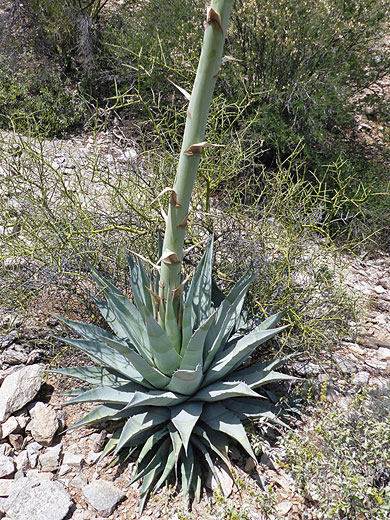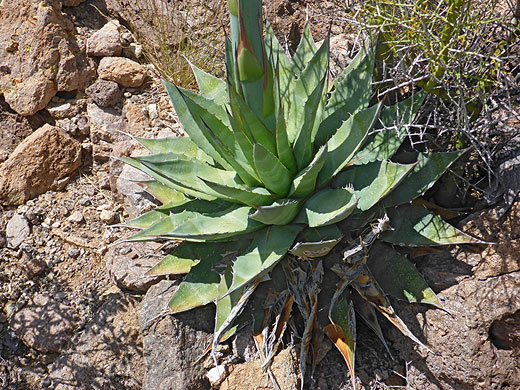Scientific name:
Agave deserti
Common name:
Desert agave, mescal, maguey
Range:
Southwest Arizona, southeast California
Form:
Occasionally solitary, but usually forming clusters
Habitat:
Rocky, gravelly or sandy locations
Flowers:
Yellow, growing in closely spaced clusters at the end of a stalk 6 to 20 feet high
The desert agave grows in the hot, dry, low elevation regions of the Sonoran and Mojave deserts either side of the Colorado River, though is not found in far southeast California. The leaves have a distinct bluish tinge, and are relatively thick and wide at the base (3 inches across), up to 27 inches in length, convex underneath and concave on top. The pronounced teeth along leaf edges are dark-tipped, a third of an inch long, and like most agave the underside of each leaf bears a permanent imprint of the teeth of from the underlying leaf, created when the two were growing together.
Old specimens of agave deserti may develop a short stem; otherwise this species is stemless (acaulescent), and forms new plants by branching from the base or the root system. Two varieties are recognized (var deserti and var simplex), differing in the flower characteristics.
Old specimens of agave deserti may develop a short stem; otherwise this species is stemless (acaulescent), and forms new plants by branching from the base or the root system. Two varieties are recognized (var deserti and var simplex), differing in the flower characteristics.
All Contents © Copyright The American Southwest | Comments and Questions | Contribute | Affiliate Marketing Disclosure | Site Map






